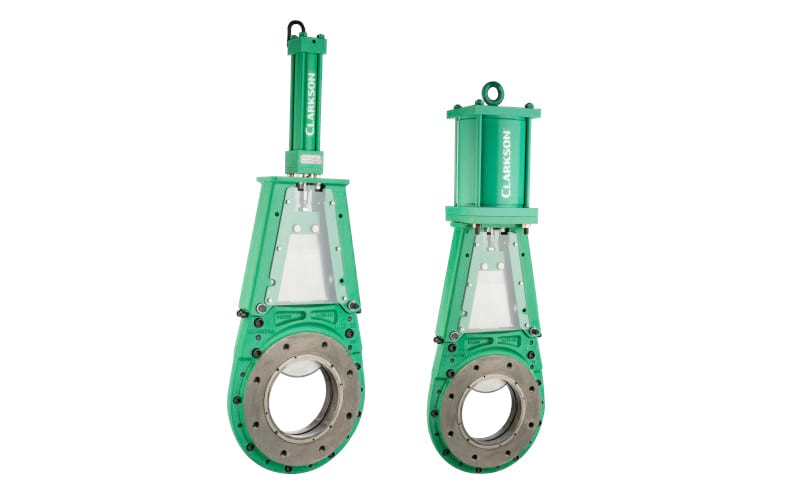Emerson today announced the new Clarkson KS1 Knife Gate Valve designed to help mine, oil sands and pulp & paper operators achieve increased availability of their most challenging slurry processes.
The new knife gate valve features a patented gate edge seal design that creates a continuous seal around the gate, together with a precision-molded elastomer seat. This heavy-duty seat increases the contact area and resilient sealing ability of the valve compared to standard O-ring designs, resulting in superior isolation performance over an extended lifecycle.
The valve design has been optimized to thrive in heavy slurry conditions with a full round port that eliminates protrusions into the flow, which minimizes turbulence across the valve and reduces wear on valve components and downstream equipment. Reversible, rotatable wear rings also come standard on both sides of the valve to protect the seat and extend maintenance intervals.
Maintenance teams were also top of mind during the design of the KS1. The valve is repairable with standard tools and readily available spare parts. Adjustments can be made to the packing system externally that dynamically self-adjust pressure to the gate edge seal system. The KS1 is also designed to standard MSS SP-135 face-to-face dimensions for simple changeout and upgrade of underperforming installed valves.
The Clarkson KS1 comes built tough for the rigors of severe slurry service in sizes 2” through 30” with a variety of available flange patterns, an ASME Class 150 pressure rating of 290 psi at ambient temperature and a temperature rating up to 300°F. Alternate materials are also available to combat extraordinary abrasive and corrosive process conditions and a variety of automation options can be configured to suit.
“The Clarkson KS1 is a compelling innovation for operators of heavy slurry processes, such as tailings lines,” explains Mike Gordon, director of Emerson’s knife gate valve business. “This valve is purpose-built for extended zero leakage isolation in these tough environments, so these processes run uninterrupted for longer to improve throughput and minimize valve maintenance costs.”

